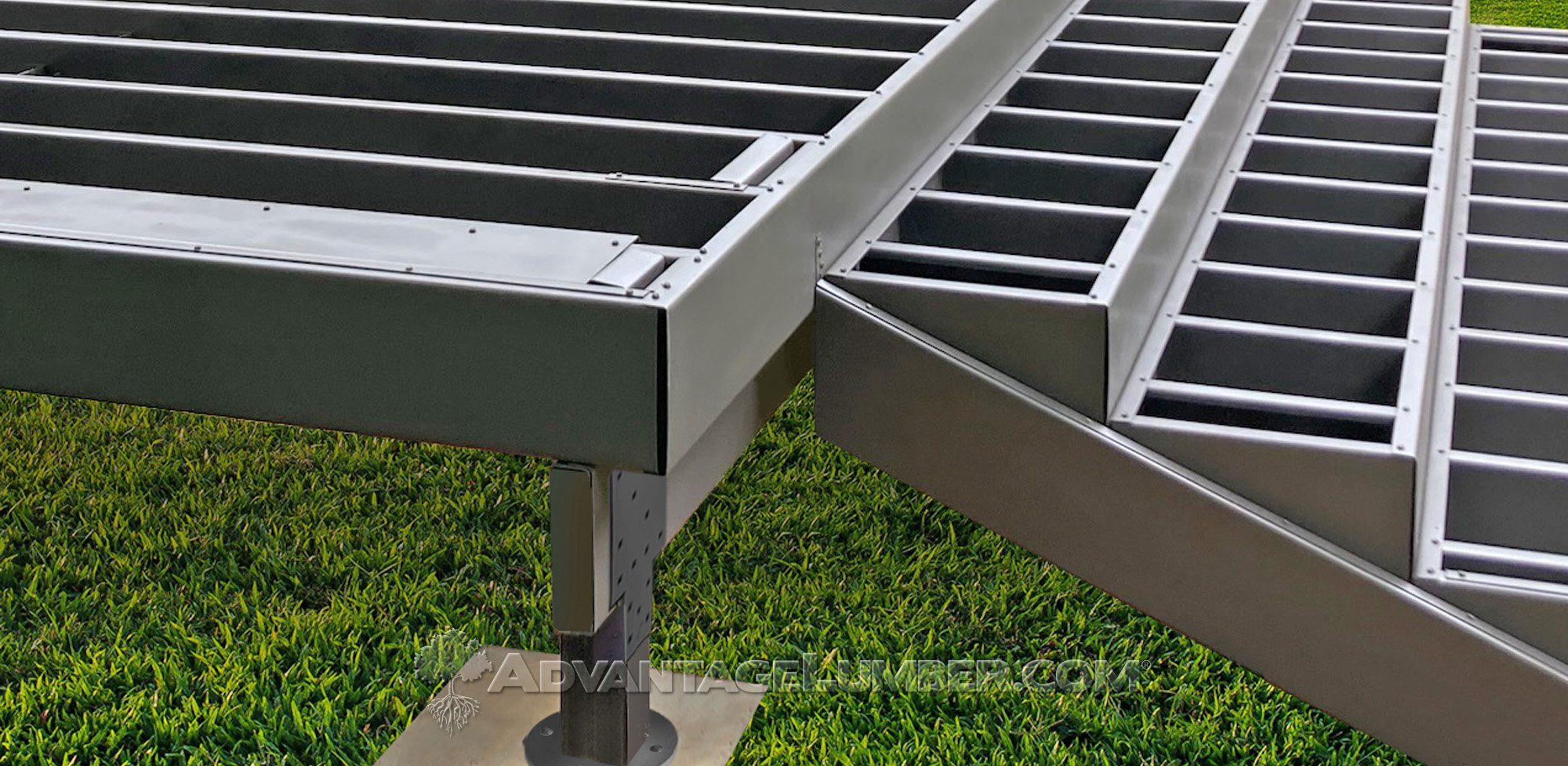When it comes to building a deck, the materials you choose for the framing can significantly impact both the durability and the overall cost of the project. Two popular options are steel deck framing and pressure-treated lumber.
In this blog post, we’ll compare the costs of these materials and explore the factors that can influence your decision.
Steel Deck Framing: The Modern Choice
Steel deck framing has gained popularity in recent years due to its durability and resistance to rot, pests, and weather. Unlike wood, steel doesn’t warp, twist, or split, ensuring a longer lifespan for your deck. It’s also carries a class 1A fire rating which is often required for area prone to wildfires.
Cost Considerations:
- Initial Cost: The upfront cost of steel framing is a bit higher than that of wood. On average for a 1 5/8″ x 8″ x 12′ – 18-gauge steel joist you can expect to pay around $95 per joist.
- Maintenance: Steel framing requires minimal maintenance, which can save you money in the long run.
- Longevity: The longer lifespan of steel can make it a more cost-effective choice over time, despite the higher initial investment. A quality steel deck frame built properly could last 50 years or more.
- Warranty: Steel deck framing offers a 25 year residential warranty. It is guaranteed for 25 years to be structurally sound from corrosion. You typically won’t find a warranty like that on standard pressure treated lumber.
- Strength: Steel deck framing can typically support more weight and span further distances than wood. This can give you more open views which is preferable especially on 2nd story decks where your deck frame is more visible.
- Insect Proof: Termites, carpenter ants and carpenter bees can not chew through metal deck framing. Carpenter bees and other wood boring insects can start destroying a wood deck frame on day one.
- Fire Code: For areas prone to wild fires (sometimes designated as a WUI), steel deck framing has a class 1A fire rating making it one of the only choice you can use for your deck frame.
Note: Many contractors are intimidated at the thought of working with steel framing because they’ve only ever worked with wood. The reality is you only need a steel cutting blade for your circular saw and it goes together in a very similar fashion as a wood frame.
The screws for metal framing are self tapping so everything goes together relatively easy. The steel framing will be perfectly flat opposed to pressure treated lumber which you are often dealing with crowning and need to flatten your joists with a planer. This alone can save you days worth of labor since once a steel frame is assembled you are ready to lay your deck boards.
Pressure Treated Lumber: The Traditional Option
Pressure-treated lumber is a popular choice for deck framing due to its affordability and availability. It’s treated with chemicals to resist rot, decay, and termite damage. The keyword here is resist, at some point in the later life cycle of pressure treated lumber you will see rot, decay and damage from wood boring insects such as termites, carpenter ants and carpenter bees.
Cost Considerations:
- Initial Cost: Pressure-treated lumber is more affordable than steel. On average depending on where you are in the country you can expect to pay around $20 for a 2′ x 8′ x 12′
- Maintenance: Wood deck frames can require regular maintenance and inspection as they are prone to attack from termites, carpenter bees and rot. Carpenter bees can start chewing large holes in pressure treated lumber immediately. These can leave you immediately with costly exterminator bills and damaged lumber.
- Longevity: While pressure-treated lumber is made to resist rot and decay, it still has a shorter lifespan than steel and the newer treatments that do not contain arsenic have been showing sign of rot in as little as 10 years.
Making the Decision
When deciding between steel deck framing and pressure-treated lumber, consider the following factors:
- Budget: If you have a limited budget, pressure-treated lumber may be the more economical choice upfront.
- Maintenance: If you prefer a low-maintenance option, steel framing might be worth the investment.
- Longevity: If you’re looking for a long-term solution, steel’s durability could save you money over time.
- Fire Code: If you live in an area prone to wild fires there’s a good chances your local building code will not allow you to use a wood deck frame. In this case the fire rating of steel deck framing is perfect for these areas.
Conclusion
Both steel deck framing and pressure-treated lumber have their advantages and disadvantages in terms of cost. Your choice will depend on your budget, maintenance preferences, and long-term plans for your deck. By weighing these factors, you can make an informed decision that aligns with your needs and priorities.
